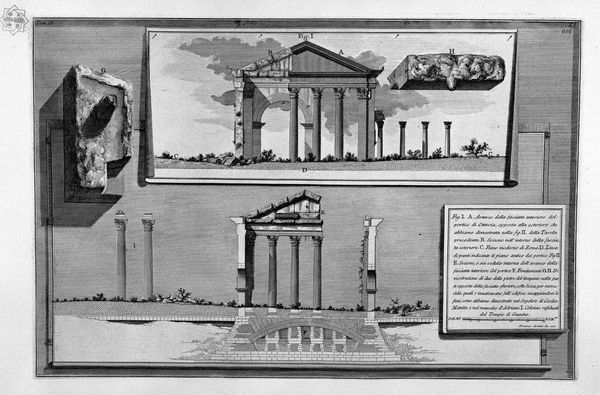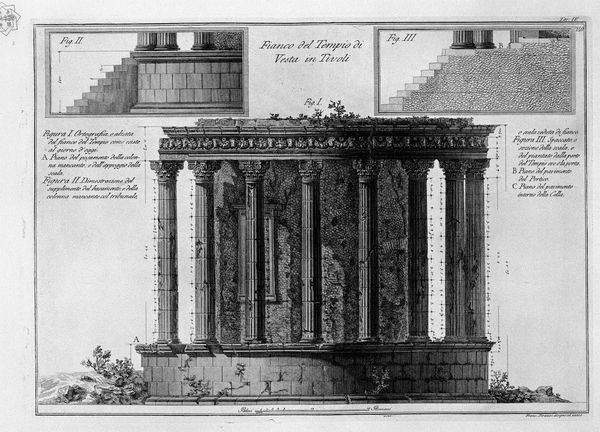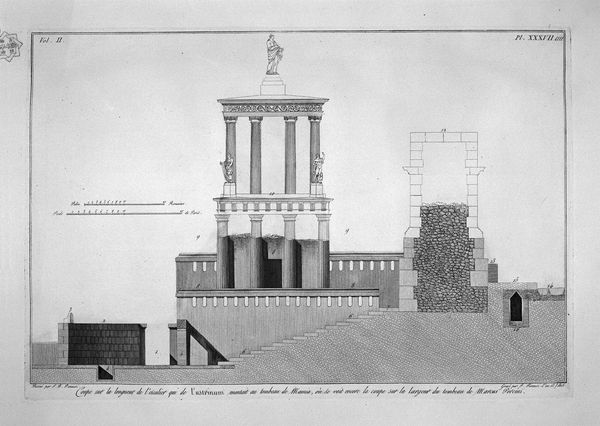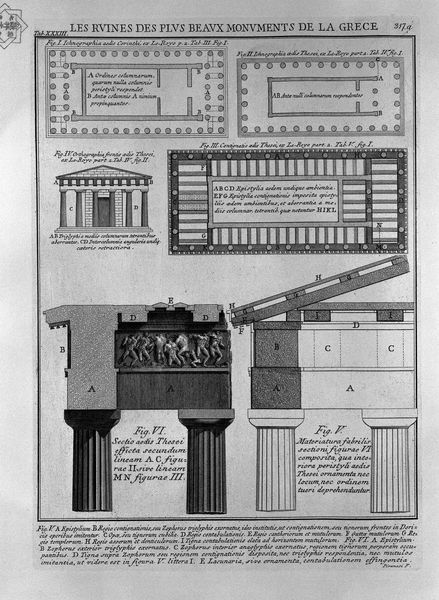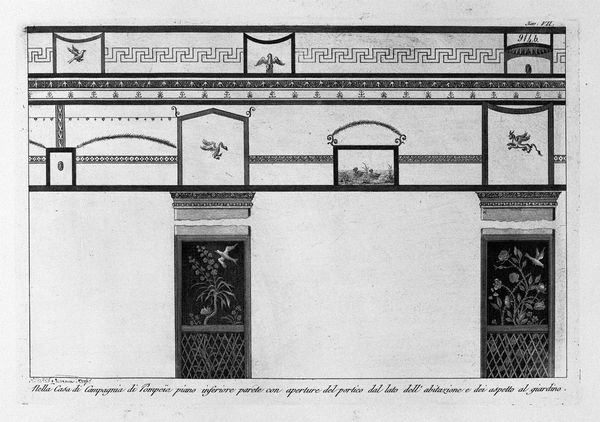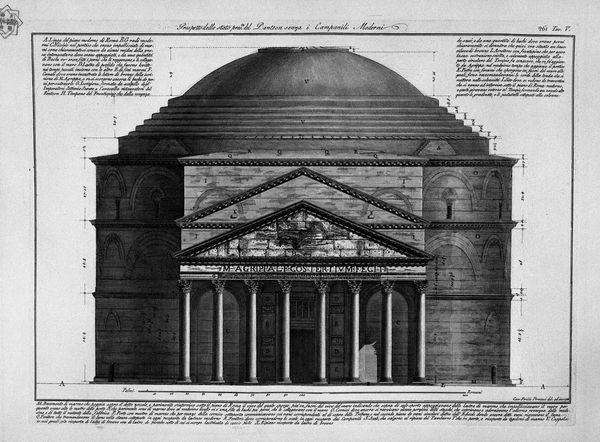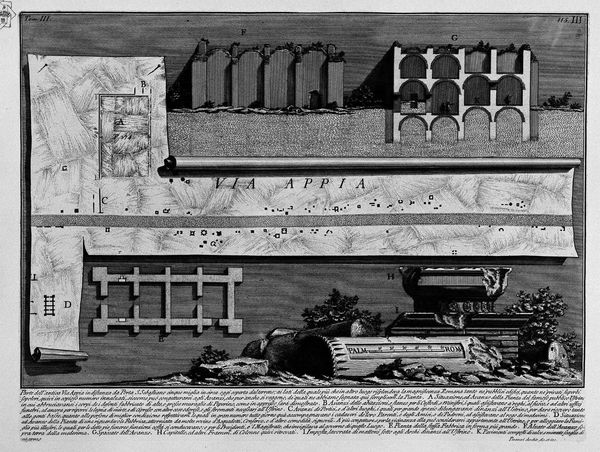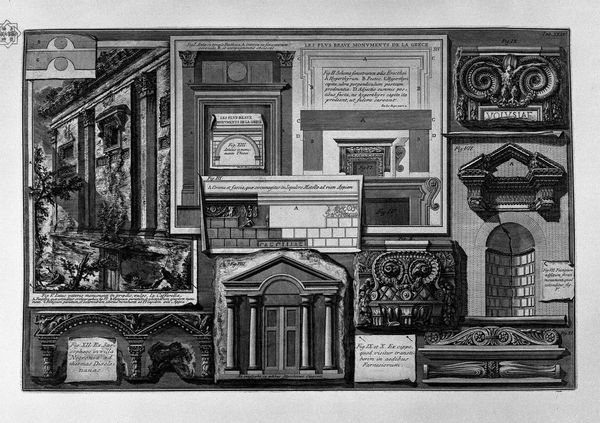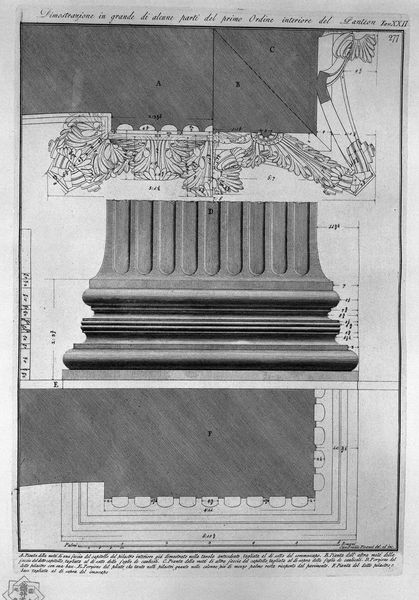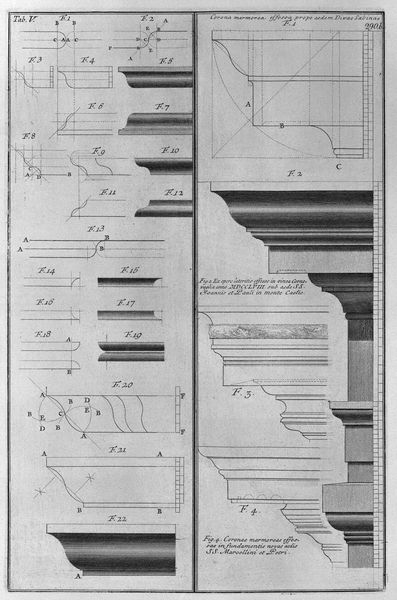
The Roman antiquities, t. 4, Plate XXXIX. Plans and elevations of the remains of the Portico d`Ottavia.
0:00
0:00
drawing, tempera, print, etching, engraving, architecture
#
drawing
#
tempera
# print
#
etching
#
architectural plan
#
classical-realism
#
architectural design
#
perspective
#
romanesque
#
geometric
#
ancient-mediterranean
#
architectural drawing
#
line
#
architecture drawing
#
history-painting
#
academic-art
#
engraving
#
architecture
Copyright: Public domain
Giovanni Battista Piranesi created this etching of the remains of the Portico d’Ottavia in Rome in the mid-18th century. Piranesi was not just an artist, but also an antiquarian, fascinated by the grandeur of ancient Roman architecture, and committed to its preservation through documentation. This print exemplifies the 18th-century obsession with classical antiquity, fueled by archaeological discoveries and the Grand Tour. It’s more than just a depiction; it's an attempt to reconstruct a lost world through meticulous detail. Consider how the artist employs architectural plans and elevations to convey a sense of accuracy and authenticity, feeding into the era’s scholarly pursuits and the developing field of archaeology. Piranesi's work also reflects the cultural politics of his time, particularly the tensions between valuing the classical past and modern innovations. His work helped shape the collective memory of Rome, influencing artistic and architectural movements for generations to come. To understand Piranesi fully, scholars consult primary sources, such as his own writings and the archaeological records of the time, as well as secondary analyses of his work in the context of 18th-century intellectual history.
Comments
No comments
Be the first to comment and join the conversation on the ultimate creative platform.
